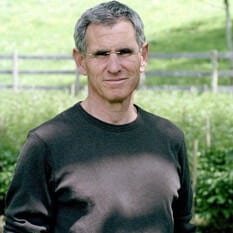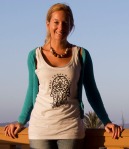 Jon Kabat-Zinn, the author of Full Catastrophe Living, is a MIT-trained microbiologist who started meditating at the age of 22. This was in 1966, while he was studying science at university, and at a time when meditating was still a fringe activity for hippies and gurus, far removed from the academic, scientific world he was a part of.
Jon Kabat-Zinn, the author of Full Catastrophe Living, is a MIT-trained microbiologist who started meditating at the age of 22. This was in 1966, while he was studying science at university, and at a time when meditating was still a fringe activity for hippies and gurus, far removed from the academic, scientific world he was a part of.
Not to be deterred by the popular opinions of the time, Kabat-Zinn balanced his scientific studies with study and training in martial arts, yoga and Zen meditation. He was convinced of the importance of a particular meditation technique. That technique was mindfulness.
“Mindfulness is a way of learning to relate directly to whatever is happening in your life, a way of taking charge of your life, a way of doing something for yourself that no one else can do for you — consciously and systematically working with your own stress, pain, illness, and the challenges and demands of everyday life.” (1)
Mindfulness is about paying attention. More specifically, it is about paying attention without judgement. It is an ancient practice that is at the very heart of Buddhist meditation. It is not something that can be explained and understood intellectually; it needs to be explored and understood through personal experience.
Full Catastrophe Living is more than a book that simply tries to intellectualise the technique. It follows the 8-week course in mindfulness meditation as used by the Mindfulness-Based Stress Reduction (MBSR) clinic based at the University of Massachusetts Medical Centre.
The clinic was founded by Kabat-Zinn in 1979 and over its 30-year history the clinic has trained over 18,000 people in the technique of mindfulness meditation.
“Partly because I had a PhD from MIT in molecular biology and had studied in the lab of a Nobel Laureate, people projected onto me that ‘He must know what he’s doing.’ So they let me do it, fortunately. They had no idea how much not-knowing was involved.” (2)
The participants at the clinic are often referred by doctors. They are suffering from anything from stress, headaches and back pain, to depression and addictions, to heart disease, cancer and aids. Numerous studies at the clinic have been published in major peer-reviewed medical journals and the results have been impressive.
People with heart disease experienced a 45% reduction in symptoms; people with high blood pressure, 43%; pain, 25% and stress, 31%. (3)
In studies looking specifically at brain function, it was found that there was a “thickening in particular regions of the brain important for learning, memory, executive decision-making and perspective-taking: all important functions to have at optimal levels when you are under stress or experiencing pain.”
Additionally it was found that certain regions of the brain got thinner. For example, the amygdala, which is the location of fear in the brain. All these results were found after just eight weeks of mindfulness training at the clinic. (2)
With these kinds of results, insurance companies are increasingly funding courses and major US companies are paying for their employees to attend, recognizing the benefits of reduced sick leave, and happier, more productive employees. One of Boston’s top legal firms paid for 360 lawyers to attend the course, finding that it improved the lawyers’ ability to handle the stress and challenges they faced and that “they’re more focused, better listeners and have more energy.” (3)
At the other end of the wealth spectrum classes are free to those in the inner cities who don’t have insurance and can’t afford to pay. Attendance is encouraged with free taxis, free childcare and follow-up calls. Classes have even been held within the prison system, with a four-year study showing significant lowering in levels of aggression.
The clinic explores mindfulness through meditation and hatha yoga and this model has been adopted by over 200 medical centers and clinics in the US and elsewhere.
The book, Full Catastrophe Living (one of numerous that Kabat-Zinn has written) explains the background to the technique and gives exercises and the structure of the course. It is also possible to buy the course audio, with a CD which comprises two 40-minute mindfulness meditations and two 40-minute mindfulness hatha yoga practices.
Having it all set out for you, and knowing that this is a course that is backed up by the experience of thousands of people and clinical trials, is of enormous value. If you are intrigued by meditation but are coming from a secular or scientific viewpoint, this particular book could be exactly the approach that you need.
But of course, mindfulness is not about a man or a book, it is not even about the technique itself. It is about the experiences that the technique allows you to have and there is only one way to find out about that.
Resources
The website for the Centre For Mindfulness founded by Jon Kabat-Zinn. Includes downloadable pdf about the course and links to other programmes offered worldwide.
www.bemindful.co.uk. Be Mindful is a UK campaign raising awareness of Mindfulness-based Stress Reduction (MBSR) and helping people to find a course near them.
Buy the Full Catastrophe Living and the accompanying CD on amazon. Or buy the audiobook on audible. If you’ve yet to use audible you can sign up for a trial and get the book for free.
Please feel free to add any useful resources you have found to the comments section below.
References
1. Centre for Mindfulness in Medicine, Health Care, and Society. University of Massachusetts.
2. Szalavitz, M (2012) Q&A: Jon Kabat-Zinn talks about bringing mindfulness meditation to medicine, Time Healthland.
3. Pintak, L. (1999) Jon Kabat-Zinn: The Prescription is Meditation, Shambhala Sun.
| About the author |
 Cat Easterbrook came on holiday to Azul Yoga & Pilates Retreat and never left, finding a home on this beautiful island and working alongside the wonderful, spirited, talented, nurturing people at Azul (her, rather biased, words). She is currently travelling in India and Nepal, studying yoga and meditation, and learning to keep her yoga calm amongst the honking horns, holy cows and cheeky monkeys. |